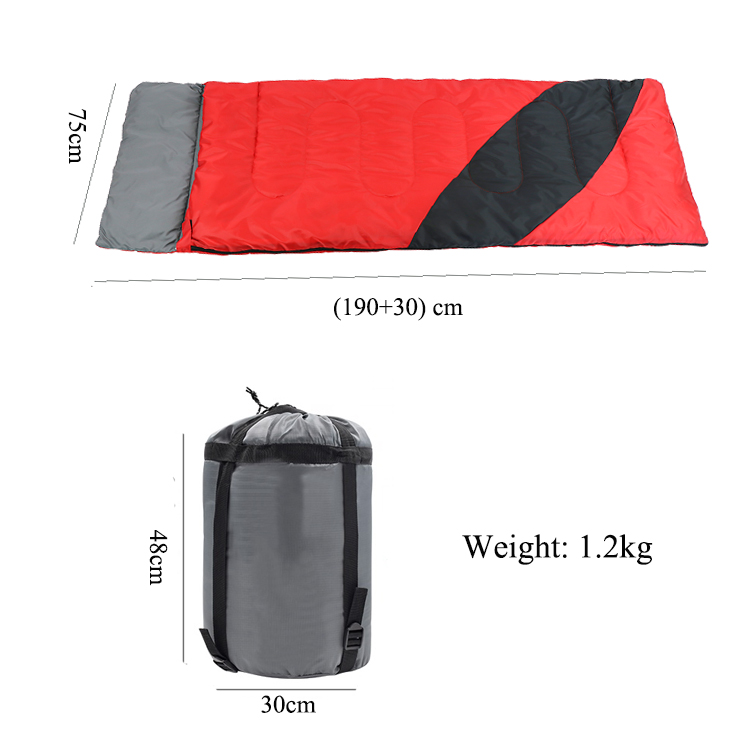
1 月 . 06, 2025 11:16 Back to list
sleeping bag camping
Camping under a star-studded sky offers an unmatched sense of tranquility, but without the right gear, your adventure might lose its charm. One essential item is the sleeping bag, a pivotal piece for any camping trip. Leveraging decades of experience in the outdoors and backed by expert insights, we delve into the key elements that make a sleeping bag not just a necessity, but a cocoon of comfort and expertise.

Selecting the perfect sleeping bag begins with understanding its temperature ratings—a critical point for ensuring warmth across diverse climates. Sleeping bags typically categorize into three-season or winter types. Three-season sleeping bags balance warmth and weight, ideal for spring through fall, while winter sleeping bags offer extra insulation for icy conditions. Yet, it’s crucial to remember that each individual's sleeping comfort varies. An expert tip is to choose a sleeping bag rated slightly lower than the lowest temperature you expect to encounter, providing an additional buffer in unexpected cold snaps.
Material makes a significant difference in a sleeping bag's performance. Down sleeping bags, prized for their exceptional warmth-to-weight ratio, are an excellent choice for backpackers who prioritize lightweight gear. They compress easily, making them convenient to pack. However, in damp conditions, synthetic sleeping bags shine. Designed to retain insulation even when wet, they dry faster and are generally more affordable. Professionals often suggest a down sleeping bag with a water-resistant shell for the best of both worlds.

Fit is another pillar of sleeping bag expertise. Mummy bags, named for their snug fit and tapered design, ensure maximum heat retention, while rectangular bags offer more space and comfort for restless sleepers. Hybrid designs such as the semi-rectangular combine the benefits of both, providing warmth without restricting movement. Expert campers often recommend testing a few styles to find your personal preference, particularly considering the cut and hood features for optimal thermal efficiency.
sleeping bag camping
Durability is an often-overlooked factor in the quest for the ultimate sleeping bag, yet it's fundamental for long-term reliability. Sleeping bags made with ripstop fabrics and featuring high-quality zippers rank highly on the experts’ list for rugged adventures. Regular maintenance, including air-drying after excursions and proper storage, extends a sleeping bag’s life, ensuring it remains a trustworthy companion.
The topic of weight and packability cannot be ignored by those seasoned in the art of exploration. Ultralight sleeping bags are designed for minimal space and maximum efficiency, a boon for backpackers aiming to pack light. Always check the compressed size as well as the weight to ensure that the sleeping bag fits seamlessly into your hiking assumption.
Beyond the technical aspects, the essence of trustworthiness emerges from a brand’s commitment to environmental stewardship and ethical manufacturing processes. Leading brands often adhere to Responsible Down Standards (RDS) or use recycled materials in synthetic options, lending an additional layer of reliability to their products.
In sum, an expertly chosen sleeping bag is more than a piece of gear; it's an investment into the joy of camping—a safeguard against the elements and a guarantor of serene slumber in nature's embrace. For both novice campers and seasoned outdoor aficionados, doing your homework pays off with nights wrapped in warmth and comfort under anchorless skies. Trust builds over time, fueled by the peaceful sleep and seamless adventures that the right sleeping bag can support.
-
Top China Adult Sleeping Bag Suppliers Lightweight & Durable
NewsMay.30,2025
-
China Camping Waterproof Picnic Blanket Supplier Wholesale Factory
NewsMay.30,2025
-
Wholesale Backpacking Sleeping Bags Lightweight & Bulk Supplier
NewsMay.30,2025
-
Emergency Sleeping Bags Wholesale Bulk Supply & OEM Options
NewsMay.29,2025
-
Sustainable Recycled Cotton Picnic Blankets Wholesale Manufacturer
NewsMay.29,2025
-
Premium Duck Down Sleeping Bag Supplier Warm & Lightweight Design
NewsMay.29,2025
